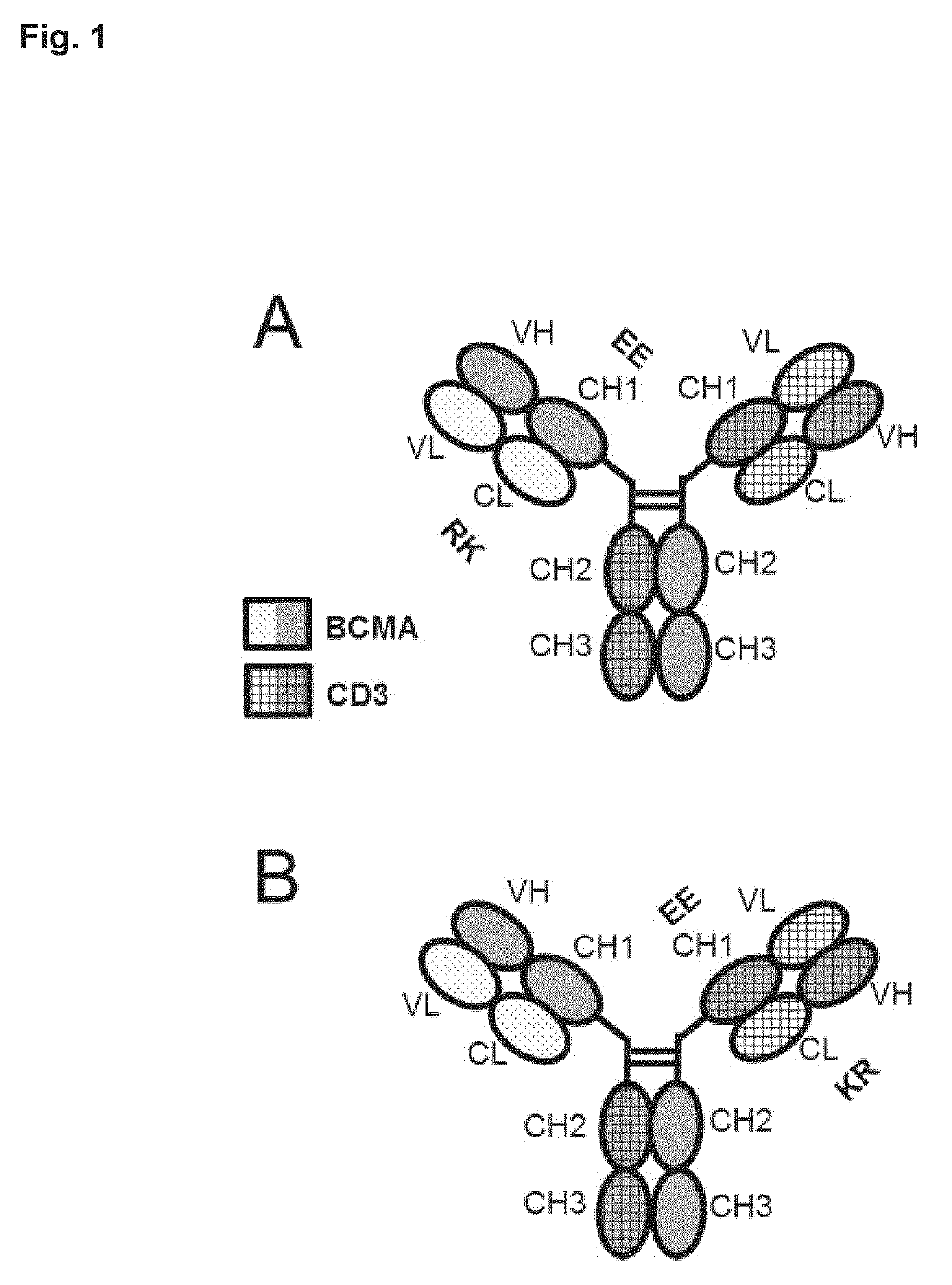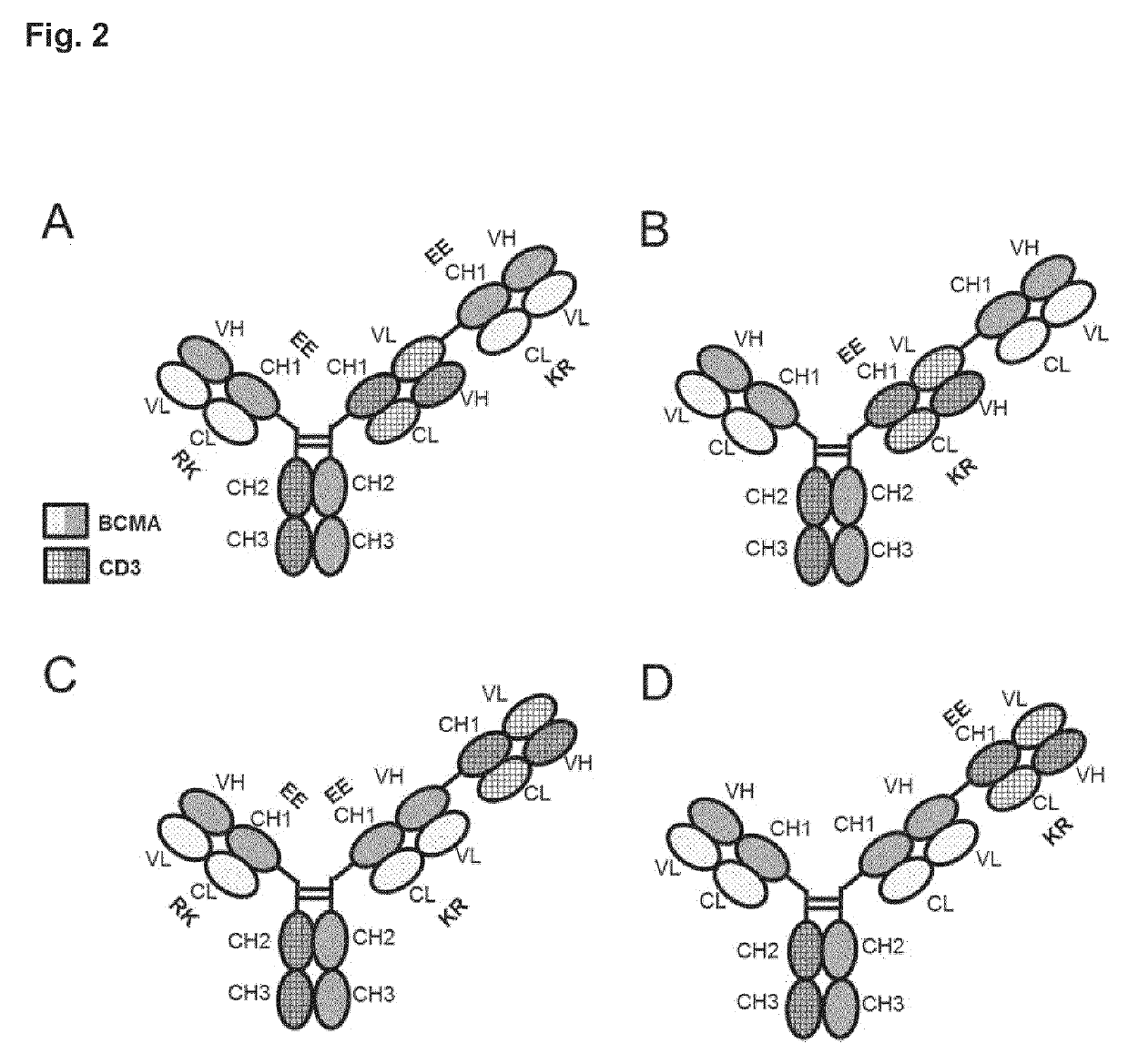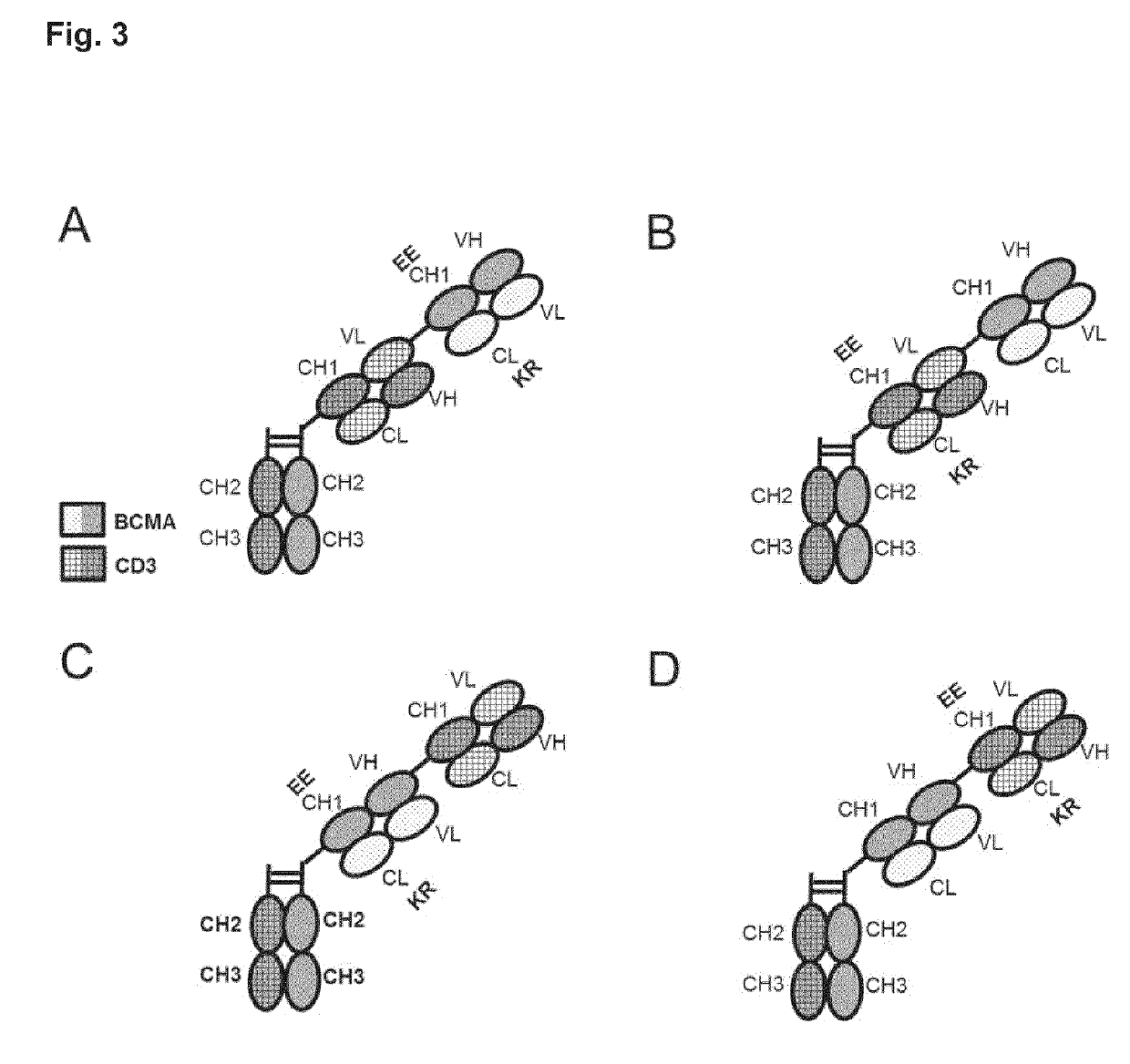Bispecific antibody against bcma and cd3 and an immunological drug for combined use in treating multiple myeloma
a technology of immunological drugs and antibodies, applied in the direction of antibody medical ingredients, drug compositions, extracellular fluid disorders, etc., can solve the problems of inability to easily develop recombinant recombinant techniques, no data currently available, etc., and achieve the effect of superior cytotoxicity activities
- Summary
- Abstract
- Description
- Claims
- Application Information
AI Technical Summary
Benefits of technology
Problems solved by technology
Method used
Image
Examples
example 1
Generation of Anti-BCMA Antibodies
Example 1.1
Production of Antigens and Tool Reagents
example 1.1.1
Recombinant, Soluble, Human BCMA Extracellular Domain
[0509]The extracellular domains of human, cynomolgus and murine BCMA that were used as antigens for phage display selections were transiently expressed as N-terminal monomeric Fc-fusion in HEK EBNA cells and in vivo site-specifically biotinylated via co-expression of BirA biotin ligase at the avi-tag recognition sequence located at the C-terminus of the Fc portion carrying the receptor chain (Fc knob chain). The extracellular domains of human and cynomolgus BCMA comprised methionine 4 to asparagine 53, and methionine 4 to asparagine 52, respectively. These were N-terminally fused to the hinge of a human IgG1 enabling heterodimerization with an unfused human IgG1 Fc portion (hole chain) by knobs-into-holes technology.
example 1.1
Generation of Anti-BCMA Antibodies by Maturation
[0510]1.1.1A.1 Libraries and Selections
[0511]Two libraries were constructed on basis of antibody 83A10. These libraries are randomized in either CDR1 and CDR2 of the light chain (83A10 L1 / L2) or CDR1 and CDR2 of the heavy chain (83A10 H1 / H2), respectively. Each of these libraries was constructed by 2 subsequent steps of amplification and assembly. Final assembly products have been digested NcoI / BsiWI for 83A10 L1 / L2 library, MunI and NheI for 83A10 H1 / H2 library, alongside with similarly treated acceptor vectors based on plasmid preparations of clone 83A10. The following amounts of digested randomized (partial) V-domains and digested acceptor vector(s) were ligated for the respective libraries (μg V-domain / μg vector): a.m.83A10 L1 / L2 library (3 / 10), 83A10 HI / H2 library (3 / 10), Purified ligations of 83A10 L1 / L2 and 83A10 H1 / H2 libraries were pooled, respectively, and used for 15 transformations of E. coli TG1 cells for each of the 2 lib...
PUM
| Property | Measurement | Unit |
|---|---|---|
| Mass | aaaaa | aaaaa |
| Mass | aaaaa | aaaaa |
| Mass | aaaaa | aaaaa |
Abstract
Description
Claims
Application Information
 Login to View More
Login to View More - R&D
- Intellectual Property
- Life Sciences
- Materials
- Tech Scout
- Unparalleled Data Quality
- Higher Quality Content
- 60% Fewer Hallucinations
Browse by: Latest US Patents, China's latest patents, Technical Efficacy Thesaurus, Application Domain, Technology Topic, Popular Technical Reports.
© 2025 PatSnap. All rights reserved.Legal|Privacy policy|Modern Slavery Act Transparency Statement|Sitemap|About US| Contact US: help@patsnap.com



